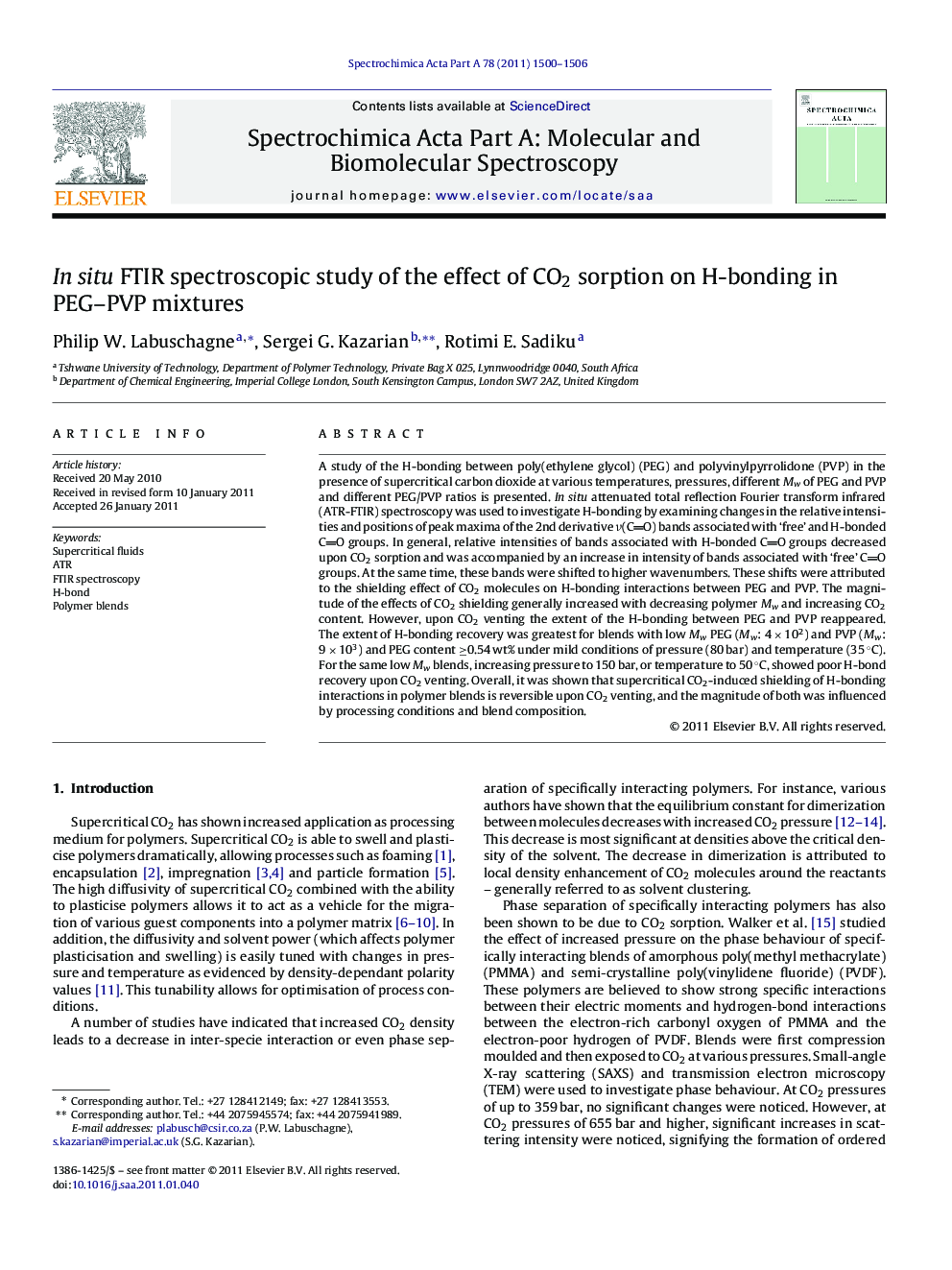| Article ID | Journal | Published Year | Pages | File Type |
|---|---|---|---|---|
| 1236172 | Spectrochimica Acta Part A: Molecular and Biomolecular Spectroscopy | 2011 | 7 Pages |
A study of the H-bonding between poly(ethylene glycol) (PEG) and polyvinylpyrrolidone (PVP) in the presence of supercritical carbon dioxide at various temperatures, pressures, different Mw of PEG and PVP and different PEG/PVP ratios is presented. In situ attenuated total reflection Fourier transform infrared (ATR-FTIR) spectroscopy was used to investigate H-bonding by examining changes in the relative intensities and positions of peak maxima of the 2nd derivative ν(CO) bands associated with ‘free’ and H-bonded CO groups. In general, relative intensities of bands associated with H-bonded CO groups decreased upon CO2 sorption and was accompanied by an increase in intensity of bands associated with ‘free’ CO groups. At the same time, these bands were shifted to higher wavenumbers. These shifts were attributed to the shielding effect of CO2 molecules on H-bonding interactions between PEG and PVP. The magnitude of the effects of CO2 shielding generally increased with decreasing polymer Mw and increasing CO2 content. However, upon CO2 venting the extent of the H-bonding between PEG and PVP reappeared. The extent of H-bonding recovery was greatest for blends with low Mw PEG (Mw: 4 × 102) and PVP (Mw: 9 × 103) and PEG content ≥0.54 wt% under mild conditions of pressure (80 bar) and temperature (35 °C). For the same low Mw blends, increasing pressure to 150 bar, or temperature to 50 °C, showed poor H-bond recovery upon CO2 venting. Overall, it was shown that supercritical CO2-induced shielding of H-bonding interactions in polymer blends is reversible upon CO2 venting, and the magnitude of both was influenced by processing conditions and blend composition.
Graphical abstractFigure optionsDownload full-size imageDownload as PowerPoint slideResearch highlights► Supercritical CO2 sorption “shields” PEG–PVP H-bond interaction. ► The magnitude of “shielding” is dependent on many variables. ► These variables include: polymer Mw, process temperature and pressure. ► “Shielding” is reversible upon CO2 venting. ► Process conditions can be adjusted to optimise PEG–PVP H-bonding.
